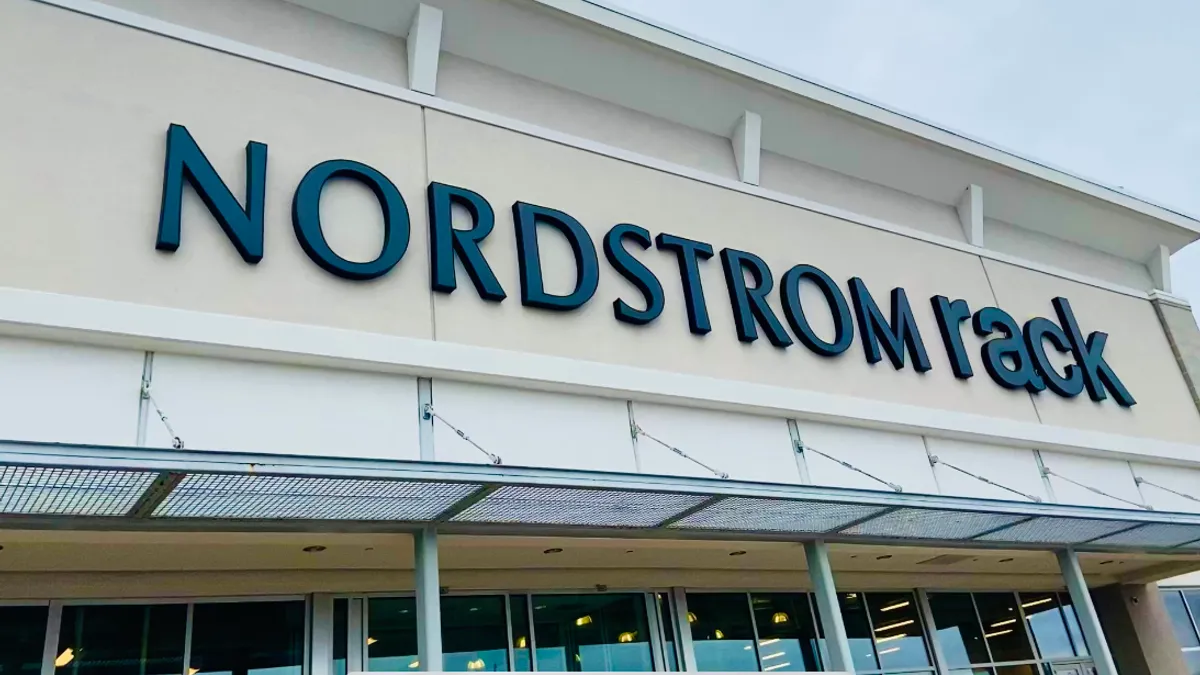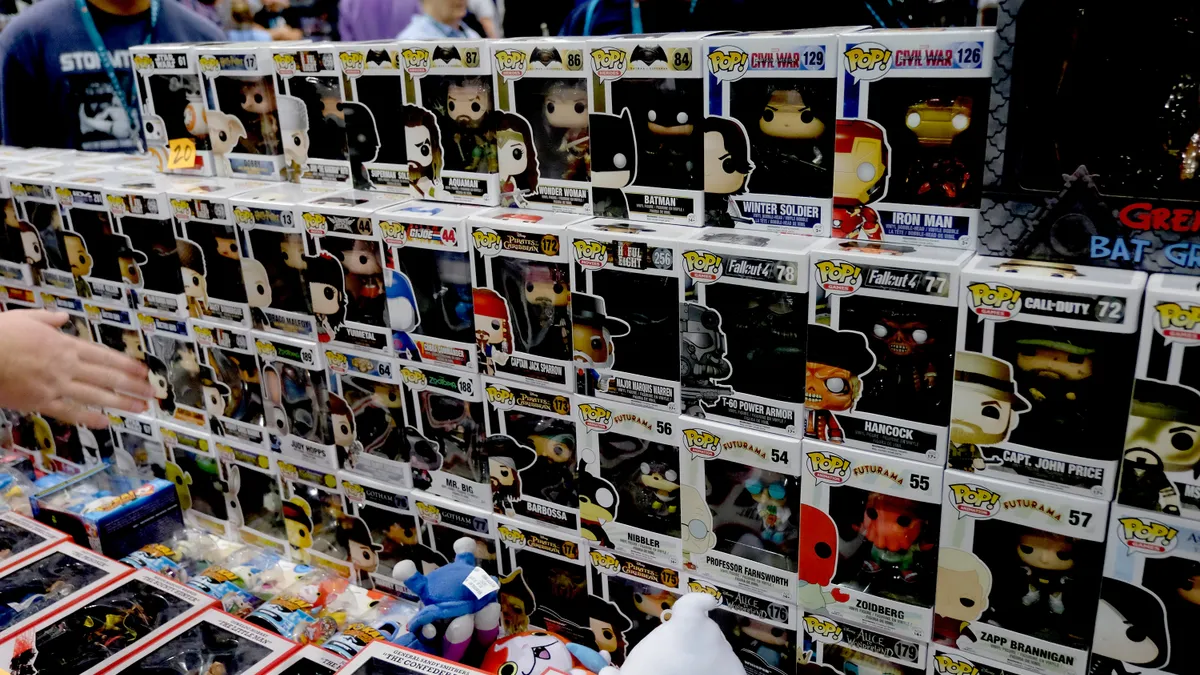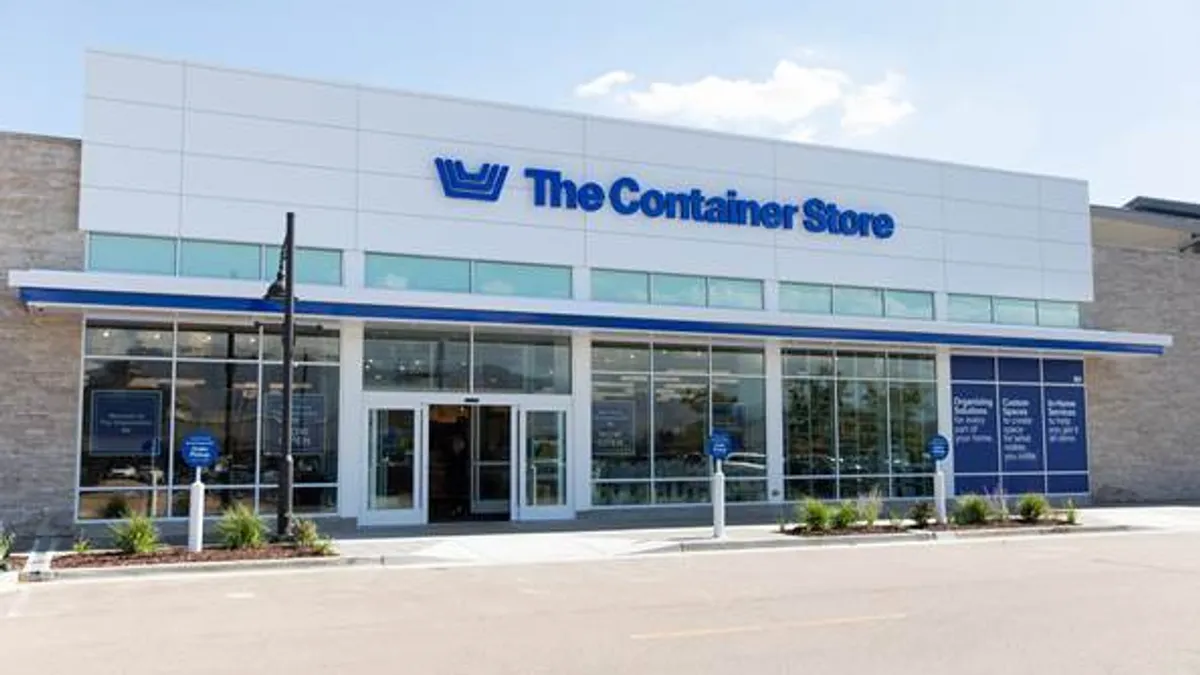Nordstrom didn't invent the bargain basement — its first Rack opened in the cellar of its Seattle flagship store in 1973, more than six decades after Boston department store Filene's innovated that method of unloading excess inventory. But Filene's Basement, which later became a stand-alone retail company, went bankrupt and ultimately folded. Meanwhile, Nordstrom Rack is still running more than 330 stores in the U.S. and 13 in Canada, plus, unusual for an off-price retailer, a website.
Nordstrom executives have long maintained that their off-price business introduces new shoppers to its full-line stores and compounds sales when customers shop both. The company reports on its fourth quarter and full year tomorrow, and observers are watching its Rack results closely because, lately, the business has been stumbling. Rather than boosting the company's overall performance as it has done for years, Rack sales declined when compared to 2019 in each of the quarters the company has reported so far.
At the end of last year, the company was said to be contemplating a spinoff of its Rack business, which some observers think might make sense. While Nordstrom didn't comment on those rumors, CEO Erik Nordstrom had previously said that consultants have been hired to help find ways to improve Rack.
"We are not satisfied at all with our Rack business, as, clearly, our recovery is lagging what we think it should be," he said in November.
The old problems
Unlike off-price leaders TJX, Burlington and Ross, Nordstrom runs a full-line department store as well as its value business. That creates problems for both, experts say.
While the bargain basement was a handy way to get rid of unsold inventory, running a chain of discount stores is a different proposition. Off-price retail has become about more than leftovers, with its own supply chain and merchandising streams. But many Rack customers are expecting Nordstrom goods at discounts, not made-for-the-outlet goods at made-for-the-outlet prices.
"It's a high-wire act because the more appealing the Rack is, the more dangerous it is as a competitor to Nordstrom stores."

Mark Cohen
Director of Retail Studies at Columbia University's Graduate School of Business
"It was simpler when it really was 'close out,'" Nikki Baird, Aptos vice president of retail innovation, said by video conference. "But if you don't have enough inventory, what do you do? That's where the trap begins, where you start designing for outlet, and then you've got to have a promotion strategy for outlet, and it'll go downhill from there. It becomes a quality issue. Those customers are willing to make some trade-offs for the discounts, but quality isn't one of them."
Erik Nordstrom in November told analysts that 90% of Nordstrom's top brands are also sold at the Rack, and that the average customer shopping at both banners, in store and online, spends more than 12 times what a single-channel customer spends. Yet, the better the merchandise at Rack, the riskier it is to the full-line business, according to Mark Cohen, director of retail studies at Columbia University's Graduate School of Business.
"It's a high-wire act because the more appealing the Rack is, the more dangerous it is as a competitor to Nordstrom stores," Cohen said by phone. "The hypothesis wasn't just that they found a really neat way to get rid of their markdowns, but that there's a younger, less well-off customer who appreciates the value — who, once they grow up and become fully employed, would gravitate up to the marble-and-glass Nordstrom store. But when I go to a Rack I see a lot of the customers you would expect to see shopping in the [full-line] store, who seem perfectly happy to forego the ambience and the customer service because of the deals."
The new problems
Two major issues have buffeted Rack in the last couple of years — one out of its control, the other very much its own doing.
First came the pandemic, which slammed retail in 2020 and continues to rattle the supply chain, the commercial real estate landscape and the consumer. The store shutdowns of that first year were especially tough on off-price retailers, which tend to rely on in-store rather than online shopping, if they run e-commerce at all.
Rack has had an advantage because it does have a robust digital sales operation, but, while the major players in the space have bounced back, Rack has slumped. In the third quarter, Nordstrom Rack sales declined compared to 2019 due in part to "inventory procurement and flow challenges," Nordstrom Chief Financial Officer Anne Bramman said last year.
The chain's issues in procuring goods wouldn't be any worse than for its rivals, according to Cohen. However, its inventory challenges were compounded by what came second: its own decision in early 2021 to appeal to a more value customer by "dramatically" expanding its price-driven merchandise.
"If they decided, as they announced a year ago, to go downmarket, which is to say maybe separate the inventory of a Rack from Nordstrom, to me that makes sense if you're looking to protect Nordstrom," Cohen said. "But it certainly doesn't seem to work with regard to keeping the lights on at the Rack."
In any case, by November, the move proved to be a mistake. "As we adjusted our assortment over the last year to add more product at lower price points, we found that we went too far in certain categories," Erik Nordstrom said.
Having too many lower-quality goods could have cost Nordstrom Rack not just customers, but also vendors, Cohen said.
"If I was a better brand who wanted to use the Rack to liquidate trailing balances or excess production, I would want to be careful that I wasn't purloining my own brand equity," he said. "I would be tremendously averse to putting my goods into an outlet that was running a lot of crap well below me in price and quality."
The solution?
Nordstrom Rack, with its record of sometimes lifting the entire company and sometimes dragging it down, has become a "wild card," according to Jessica Ramírez, retail research analyst at Jane Hali & Associates. Because of its online strength and affiliation with Nordstrom, Rack isn't exactly comparable to other retailers in the off-price space, but it also needs to be different than its full-line sibling, she said by phone.
That may argue in favor of splitting the businesses up. It's a more rational idea than an e-commerce spinoff, according to Aptos' Baird. That's been pushed at Kohl's and Macy's, after being executed at Saks and off-price Saks Off 5th, which themselves are separate companies. Macy's last week rejected the idea.
"I certainly think it's a better idea to spin off something like that than to try to spin off the dot-com," Baird said. "I'm 100% for spinning off a business that becomes something else than what you thought it was going to be when it started, rather than trying to double down on it."
Splitting the companies in two could help the share price, but does nothing to address some tough but necessary questions, Cohen said. That includes how many stores Rack should be running, given that, according to Erik Nordstrom, the company has "a really big digital channel in rack.com. We've been making investments there."
With the department store model in the midst of a multi-decade decline, in part due to the rise of off-price retail, both Rack and full-line Nordstrom should also face some existiential questions, Cohen said.
"Maybe Nordstrom Rack becomes a wholly owned subsidiary of Nordstrom, and there's some short-term opportunity for the bandits on Wall Street to make some money on the stock," he said. "But they've got to almost step back and ask the question — just exactly what is Nordstrom in the 21st century? Because it's not going to be what Nordstrom was in the 20th century. And then reconstruct, from almost a clean sheet of paper."




















